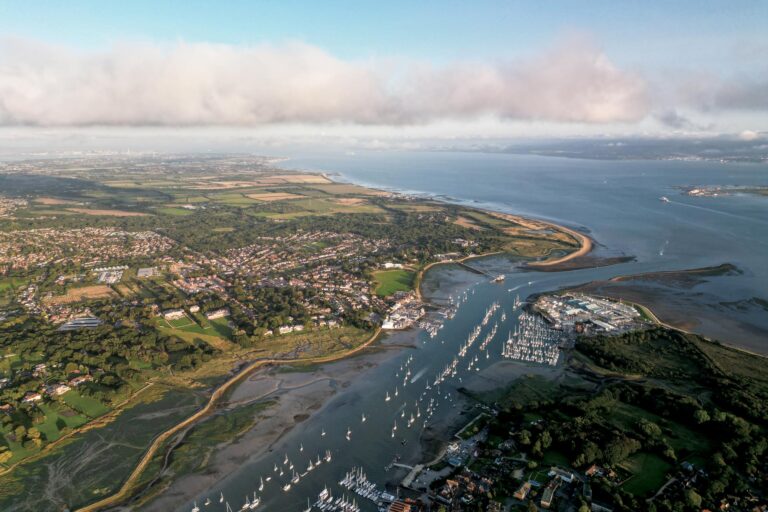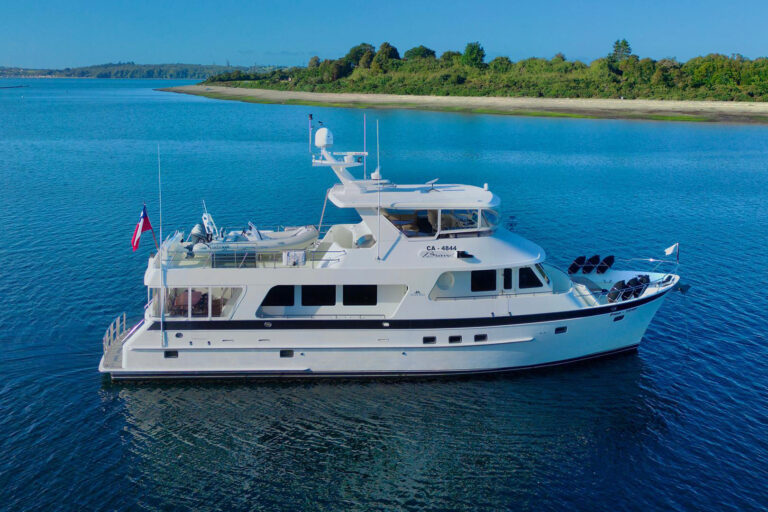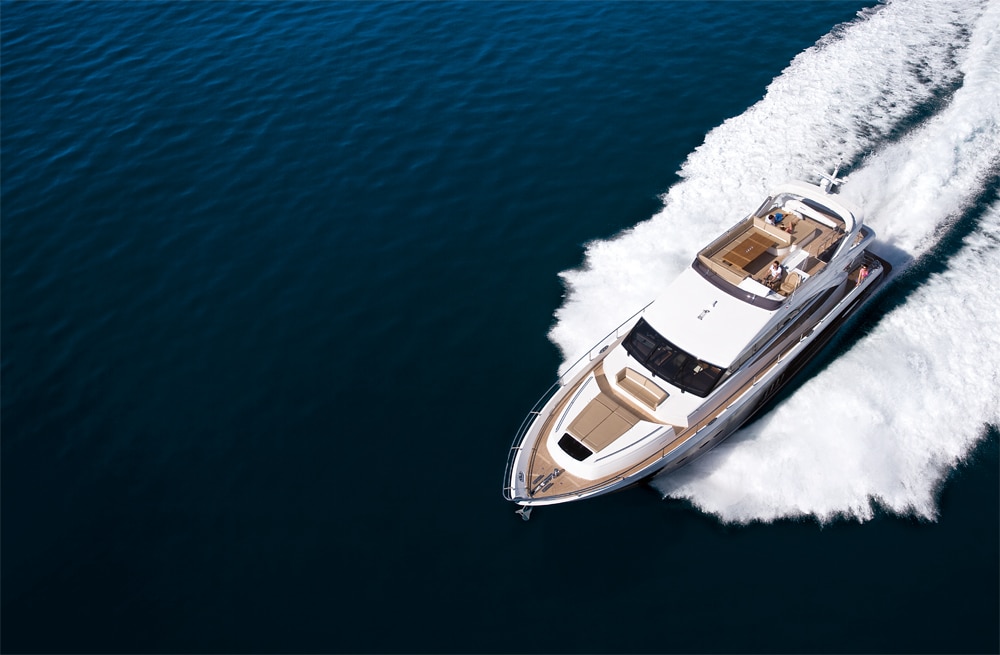
Princess 72 Motor Yacht
As I inspected the new Princess 72 Motor Yacht I thought of my review of one of the first Viking Sport Cruisers to arrive on our shores: “What do you get when you take a boat with Mediterranean design influence, add British construction and introduce an American nameplate? ‘Success,’ if Viking Yachts’ joint venture with Marine Projects of Plymouth, England, pans out.” Now that Viking has delivered 500 Sport Cruisers, the relationship has clearly not merely panned out, but evolved. The 72 is one of the first Princess products to wear the Princess badge here in the United States.
Coming from the free-thinking design side, I have always thought of reality-based boatbuilders as set in their ways. Looking back, I confess that 15 years ago I had my doubts that two hands-on boatbuilding legends like Bill Healey of Viking and David King of Princess would ever see eye to eye for long. And while they might not have always agreed on the best way to build a boat, they both built damn good ones, and I suspect that respect for this fact and sharing of ideas have only led to better products on both sides of the Atlantic. The timing of their joint venture was perfect. American baby boomers had an eye for European-style performance yachts, but many were uncomfortable with unfamiliar brands and the poor reputation some European builders had earned in the United States. With a strong pedigree in service, Viking’s stamp of approval eased this concern and the rest is, as they say, history.
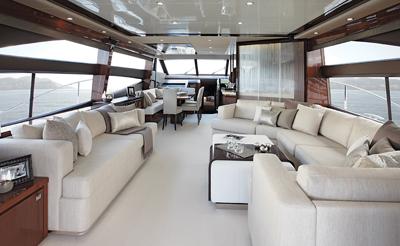
The 72 has been well-received in Europe and I expect that performance-minded yachtsmen on this side of the Atlantic will not be disappointed. I will admit that I am old school and find a lot of Euro-designs a bit over the top, but I have long had a soft spot for Princess’ products. Perhaps it’s British reserve, but this builder seems to know not to overdo it — the 72 is a perfect example. À la Euro-style, she has a fairly straight sheer, a rakish nose and a soft, shapely reverse transom. She is not complicated with side exhausts that serve as piling fodder, and while her swim platform has a teak-covered tender lift, it does not look like an open tailgate.
Other than fussing with oddly shaped hull windows, Euro-stylists seem to expend most of their passion on the superstructure — ergo, overdone. This is not the case with the 72. Her softly raked house/bridge face and cantilevered overhang are well-proportioned, and she is not cluttered with winglets or foolish faux vents. The segmented house-side window design is sufficiently interesting without being busy or confusing to the eye. The antenna arch adds a pleasing accent and is high enough that the radar does not sterilize the helmsman. Our test boat was fitted with an integral hardtop with a retractable canvas sunroof. All in all, she is a great-looking boat.
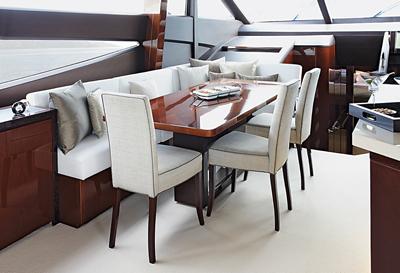
I’ve owned a dozen Land Rovers and I confess that I like the way the Brits think when it comes to engineering and production. It is my theory that, in a Henry Ford sort of way, they focus on perfecting the product by perfecting the process. At Princess this has meant bucking the European boatbuilding tradition of using subcontractors. Princess is vertically integrated, which is more typical of U.S. builders. By not relying on others for things like metal fabrication and joinery, a builder has more control over the process and the product.
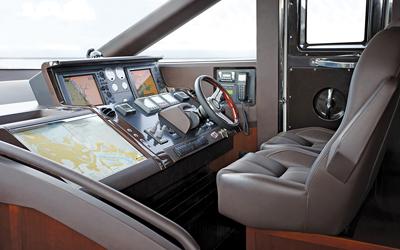
In 2006 Princess took things a step further by adopting JIT (Just In Time) assembly techniques and switched from a build-in-place process to assembly stations. “Today our delivery scheduling is more precise and pre-delivery punch lists have been minimized — it’s a better product,” said James Nobel, marketing director for Viking Sport Cruisers. Nobel points out that tasks like plumbing and testing a fuel-filtration system can now be done on a workbench instead of stooped over in a crowded bilge. The 72’s interior joinery is computer-cut, assembled and finished in a dust-free environment. “The net result is a better work environment and a better outcome,” Nobel said.
The Princess 72 is built to Viking Sport Cruisers specification. This includes 60-cycle electrical service, U.S. certification and an equipment list that is geared to the American market. Items that are not readily available in the United States are kept in inventory at Viking. The 72’s solid fiberglass hull is resin-infused and reinforced with stitched multidirectional fiberglass. The bottom is supported by a closely spaced network of fiberglass stringers and web frames. Structural bulkheads are marine plywood and are bonded and mechanically fastened. The topsides, superstructure and decks are cored with closed-cell foam. The 72 is available with white or blue gelcoat topsides. The engine room is accessible from the transom door via the crew’s quarters or from a hatch in the afterdeck. As is typical of European designs, the accommodation space is maximized while the machinery space is tight. While the 72’s engine room has full headroom, wing tanks outboard of the engines crowd things a bit. A 27.5 kW generator in a sound shield is tucked behind a service panel in the passageway adjacent to the crew’s quarters.
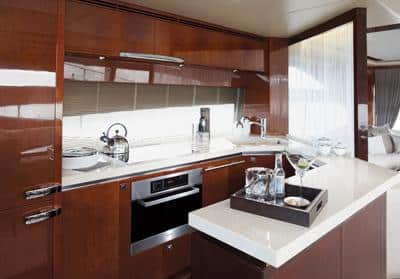
Princess keeps its five-axis router busy, typically introducing four new models a year. While computer modeling has come a long way, it is still easier to spot a problem when you’re standing in front of it. For this reason Princess creates a full-size interior mock-up before committing to production. Since the 72 replaces a popular 70-foot model introduced in 2004, the design team had plenty of input from its sales team and owners. The most significant change is the absence of interior access to the bridge. This has allowed a more open bridge design with a full-service bar. While the 70 had a split-level salon, the 72’s single-level design is easier to navigate and better suited for entertaining. Belowdecks, the 72 has a full-beam master, a larger stateroom with a queen island berth forward and two guest cabins with single berths that convert to doubles. Oak, cherry and walnut interior joinery in satin or gloss finish is offered.
The 72 has a freshly penned hull form by Bernard Olesinski with a moderate entry, shallow propeller pockets and a 19-degree transom deadrise. During sea trials I recorded a top speed of 36.7 knots and 32.2 knots at 2100 rpm. She accelerates evenly and quickly to speed. Her steering is precise and she banks comfortably inboard in turns. While seas were not particularly challenging, given my past experience with Olesinski designs, I suspect the 72 will deliver a soft, dry ride in tougher going. Her performance is exhilarating and surprising for a boat of her size and configuration — she’s fun to drive!
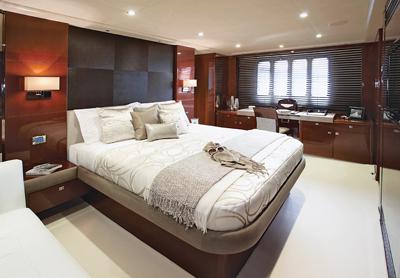
Princess founder David King still leads the company, and Princess’ 2,000 employees are currently producing 19 models from 42 to 130 feet. At its peak in 2008, Princess delivered 400 boats, and while the economy is still in recovery mode, the builder delivered almost 300 boats in 2010. This is impressive but not surprising given today’s experienced buyers — the Princess 72 Motor Yacht makes good sense.
LOA: 73’2″
LWL: 58’0″
Beam: 18’0″
Draft: 5’6″
Displ.: 99,207 lb.
Fuel: 1,321 gal.
Water: 355 gal.
Deadrise: 19 degrees
Engines Tested: 2 x 1,600-hp Caterpillar C32A diesels
Price: Upon request
Viking Sport Cruisers, 877-846-9874; www.princessyachts-us.com
_Read more about Viking yachts._
_View a complete photo gallery._
_
_





